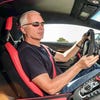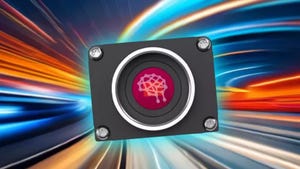Cabin Air Filters Protect Against Wildfire Smoke
Carmakers have put cabin air filters in cars for years, but drivers frequently overlook their replacement.

Just as we had the opportunity to learn about air purification due to the Covid-19 pandemic, the apocalyptic smoke cloud from Canadian forest fires is reminding us of the need to filter small particles from our air to maintain health.
We mostly concerned ourselves with indoor air purifiers during the pandemic, but now that we aren’t cooped up at home, the ability to clean the air in our cars is important.
Cabin air filters are a common feature in most recent cars, but they are often overlooked. At least, until now, when the air outside cars in the northeastern U.S. is unhealthy to breathe.
These filters need to be replaced periodically because they get clogged with the gunk they filter over time, so now’s a good time to replace the one in your car if it wasn’t done recently. The replacement interval varies, so you’ll need to check your car’s owner’s manual, but it seems like doing it every other oil change is a reasonable rule of thumb.
The good news is that the filtration quality depends mainly on the replaceable filter element so that even an older car that came with a non-HEPA-grade filter can have its air-cleaning capability upgraded to HEPA levels with the installation of a better filter.
According to the EPA, “HEPA is a type of pleated mechanical air filter. It is an acronym for "high efficiency particulate air [filter]" (as officially defined by the U.S. Dept. of Energy). This type of air filter can theoretically remove at least 99.97% of dust, pollen, mold, bacteria, and any airborne particles with a size of 0.3 microns (µm). The diameter specification of 0.3 microns corresponds to the worst case; the most penetrating particle size (MPPS). Particles that are larger or smaller are trapped with even higher efficiency. Using the worst case particle size results in the worst case efficiency rating (i.e. 99.97% or better for all particle sizes).”
Ford says its Refresh95 filters aim to help reduce microscopic particles that can originate both inside and outside a vehicle’s interior.
Here are 5 ways Ford Refresh95 certified air filters can help improve vehicle interior air quality:
Filters air particles 30 times smaller than a single human hair: The average human hair is about 70 microns in diameter. Ford Refresh95 certified air filters can help remove at least 95 percent of 2.5-micron size traffic exhaust, organic material, metals, and road dust particles.
Helps reduce allergens: Ford Refresh95 certified air filter can trap up to 99 percent of some allergens, including common pollens and dust particles.
Traps bacteria-sized particles: Ford Refresh95 can help reduce airborne concentrations of bacteria-sized particles.
Isolates smog and soot: In dry climates with dust storms or wildfires and urban areas with heavy stop-and-go traffic during commutes, Ford Refresh95 can help filter the particulate matter found in smog and soot.
Laboratory tested: Ford Refresh95 was put through comprehensive third-party lab certification testing, including pressure drop testing to verify Ford Refresh95 will work throughout the recommended service interval.
Tesla has been a vocal proponent of cabin air-scrubbing technology, with a system that has what it calls “biowarfare mode,” that employs both a HEPA particle filter and a charcoal filter to absorb chemicals. The company posted a video of one of its cars inside a chamber filled with red smoke that provides a shockingly good approximation of the air in some places in recent days.
Even without Tesla’s biowarfare mode, your car probably has a particulate filter that can benefit from a change to a fresh HEPA filter. Remember to keep the air on “recirculate” to reduce exposure to the outside air.
About the Author(s)
You May Also Like





